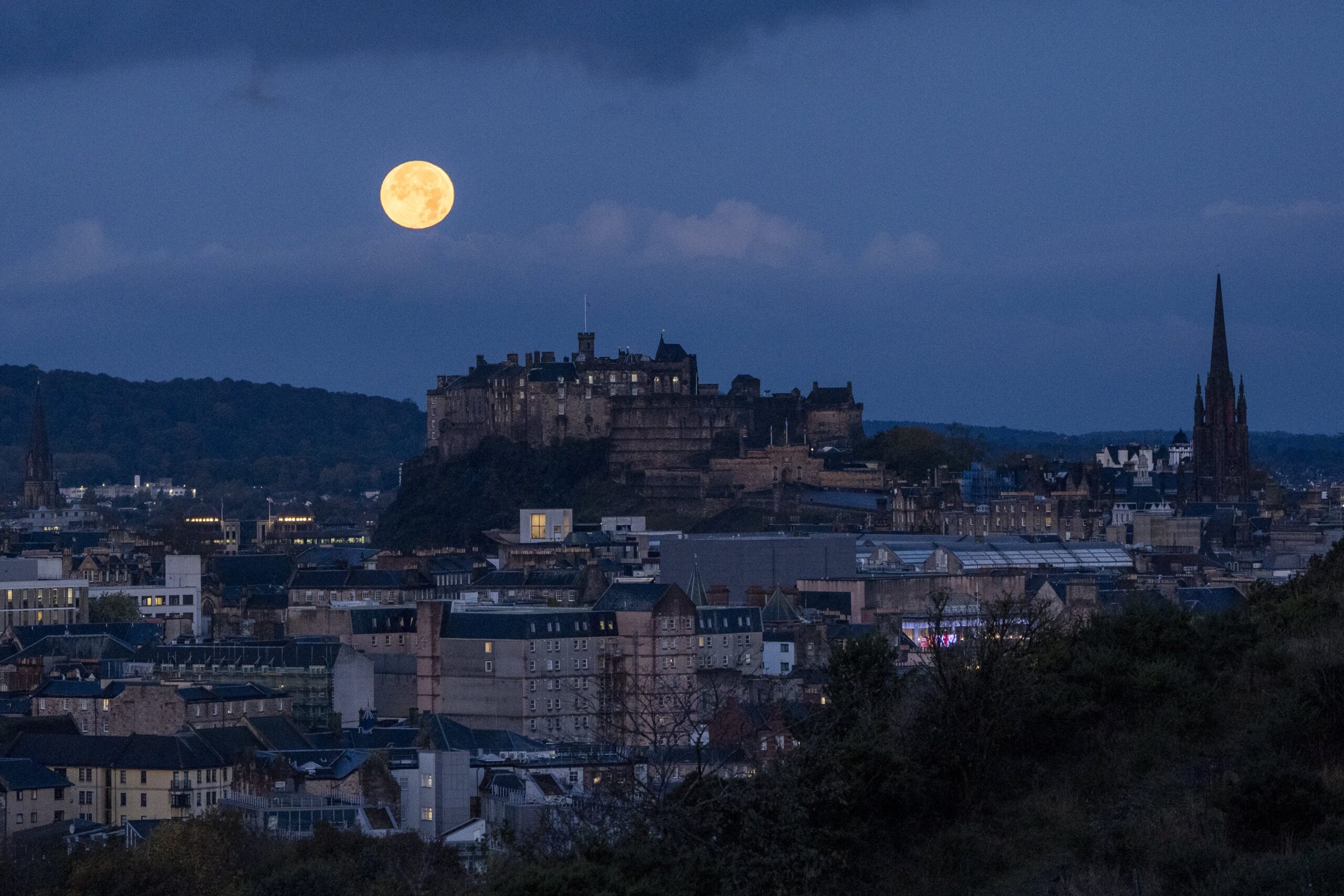This year’s October supermoon should be visible from “anywhere, including a light polluted city”, astronomers have said.
It is set to rise from 6pm on Tuesday evening and should appear larger and fuller than usual because of the Moon being at a point in its orbit which is nearer to Earth.
This year’s Hunter’s Moon also happens to be the Harvest Moon – a name for the full moon that rises closest to the autumn equinox, usually in September.
This month’s full moon, called the Hunter’s Moon, is the first of three consecutive supermoons expected to appear before the end of 2025.
Jonathan Vautrey, meteorologist at the Met Office, said: “Traditionally, the October Full Moon is termed the Hunter’s Moon.
“This references how people in the northern hemisphere spent October preparing for the coming winter by hunting and preserving meats.
“The Harvest Moon is the full moon closest to the September equinox around 22nd-23rd September.
“Most years, it’s in September, but around every three years – including in 2025 – it falls in October.”
Jessica Lee, an astronomer at the Royal Observatory Greenwich, said people keen to admire this year’s Harvest Moon should be able to spot it easily and without equipment.
“For London, it will rise around 6pm BST and set around 9am the following morning,” Ms Lee said.
“You’ll easily be able to spot and admire the full moon from anywhere, including a light polluted city, and don’t need any special equipment.”

But the weather might put a dampener on the event for those in Wales and central and northern England, where clouds and rain are expected to obscure the skies.
Kathryn Chalk, meteorologist at the Met Office, said: “Occasional clear spells during the rise of the supermoon are possible in the far south of England, with cloudier skies for Wales, central and northern England where a weak weather front brings rain and drizzle.
“Behind that, Scotland holds onto the clearest spells where there is also a chance of seeing the aurora (Northern Lights) to the far north as well.”
The Harvest supermoon also coincides with the Draconids meteor shower, which is expected to peak on Wednesday night – though the moonlight may make it difficult for skygazers to spot them, Ms Lee warned.
“The Draconids meteor shower is named after the constellation of Draco the dragon,” Ms Lee said.
“This is because, although meteors appear all over the sky, they all appear to emerge or radiate from a single point that lies within this constellation.
“The meteor shower is visible from the 6th until the 10th of October this year.
“The best time will be from around 8pm on the 8th of October.
“At this time, that radiant point within Draco will be in the north-west of the sky, slowly getting lower in the sky until sunrise.
“The moon will be almost full on this night however, so it could make the meteors tricky to see.”
The Draconids are caused when debris from the comet 21P/Giacobini-Zinner burns up in the Earth’s atmosphere, Ms Lee added.
“Most of this debris will burn up at a height of around 80km above the ground, so this is not a dangerous event,” she said.
“For the best chances to spot them, find a dark area of clear sky and allow around 20 minutes to let your eyes adapt to the dark.
“It may also be advisable to lie down as you may be looking up for a long time.”
The next supermoon is set to rise on November 5, the Greenwich Royal Observatory said.
